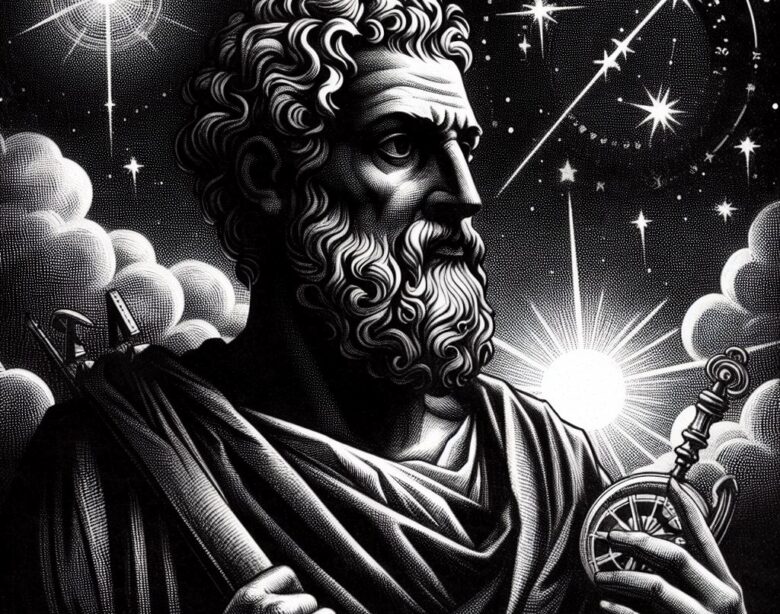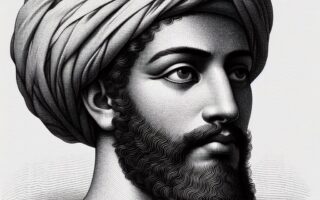Ptolemy: A Legacy of Mathematical and Scientific Innovation
Claudius Ptolemy, commonly known simply as Ptolemy, was a Greek-Egyptian scholar whose work in mathematics, astronomy, geography, and optics left an indelible mark on the history of science. Living in the 2nd century AD, Ptolemy’s contributions to these fields were so profound that his works remained influential for over a millennium, shaping the development of Western and Islamic scientific thought.
Early Life and Background
Claudius Ptolemy was born around 100 AD in the city of Alexandria, in the Roman province of Egypt. Alexandria, founded by Alexander the Great, was one of the most important cultural and intellectual centers of the ancient world, housing the famous Library of Alexandria. It was within this vibrant scholarly environment that Ptolemy lived and worked.
Little is known about Ptolemy’s early life, including his education and personal background. However, his extensive knowledge of mathematics, astronomy, geography, and other sciences suggests that he was highly educated and had access to the vast resources of the Library of Alexandria. Ptolemy was a polymath, excelling in multiple disciplines, and his works reflect a deep understanding of both Greek and Egyptian scientific traditions.
Contributions to Astronomy: The Almagest
Ptolemy’s most famous work, the “Almagest,” is a comprehensive treatise on astronomy that became the cornerstone of Western and Islamic astronomical knowledge for over a thousand years. The “Almagest,” originally titled “Mathematike Syntaxis” (Mathematical Treatise) and later known as the “Megale Syntaxis” (Great Treatise), was translated into Arabic as “Al-Majisti,” from which the name “Almagest” is derived.
The “Almagest” is an extensive compilation of the astronomical knowledge of Ptolemy’s time, building on the work of earlier Greek astronomers such as Hipparchus. In this work, Ptolemy presented a geocentric model of the universe, where the Earth was at the center, and all other celestial bodies, including the Sun, Moon, and planets, orbited around it in complex paths. This model, known as the Ptolemaic system, incorporated epicycles and deferents to explain the observed motions of the planets.

While the Ptolemaic system was eventually replaced by the heliocentric model proposed by Copernicus in the 16th century, Ptolemy’s work was remarkably accurate for its time. The “Almagest” provided detailed tables for predicting the positions of the stars and planets, and its methods were used by astronomers for centuries. The influence of the “Almagest” extended beyond astronomy; it also contributed to the development of trigonometry, as Ptolemy introduced mathematical techniques to calculate the angles and distances between celestial bodies.
Contributions to Geography: The Geographia
Ptolemy’s contributions to geography are encapsulated in his work “Geographia,” also known as the “Geography” or “Cosmographia.” This work was a compilation of geographical knowledge and maps that represented the known world of Ptolemy’s time. The “Geographia” was based on the knowledge of earlier geographers, such as Marinus of Tyre, but Ptolemy expanded upon this information, introducing a systematic method for mapping the Earth.
Ptolemy’s “Geographia” was revolutionary in its use of a coordinate system to define the positions of geographical locations. He introduced the concepts of latitude and longitude, which allowed for the precise measurement and mapping of places on the Earth’s surface. Ptolemy’s maps, though not entirely accurate by modern standards, provided a framework for later cartographers, such as René Descartes, and explorers. His work influenced the development of European map-making during the Renaissance and was instrumental in the Age of Exploration.
Ptolemy’s maps also included the concept of a spherical Earth, a view that was not universally accepted at the time. He calculated the Earth’s circumference with a reasonable degree of accuracy, although his measurements were later found to be smaller than the actual value. Despite this, Ptolemy’s “Geographia” remained a standard reference for centuries, shaping the way people understood and represented the world.
Contributions to Optics: The Optics
Ptolemy also made significant contributions to the field of optics, the study of light and vision. His work “Optics” was one of the earliest systematic treatises on the subject, and it explored various aspects of light, including reflection, refraction, and the properties of lenses. In “Optics,” Ptolemy conducted experiments to understand how light behaves when it passes through different media, such as air and water.

One of Ptolemy’s key contributions to optics was his study of refraction, the bending of light as it passes from one medium to another. He measured the angles of incidence and refraction for different materials and attempted to develop a mathematical model to describe the relationship between these angles. Although his model was not entirely accurate, it laid the groundwork for later developments in the study of refraction, which would eventually be perfected by scientists like Willebrord Snell and Isaac Newton.
Ptolemy’s work in optics also included an exploration of the human eye and vision. He proposed theories about how the eye perceives light and color, and he discussed the phenomena of visual perception, such as optical illusions. His contributions to optics were influential in the development of the field and were studied by later scholars in both the Islamic world and medieval Europe.
Ptolemy’s Legacy
Ptolemy’s impact on the history of science and mathematics cannot be overstated. His works, particularly the “Almagest,” “Geographia,” and “Optics,” were foundational texts that shaped the course of scientific inquiry for centuries. In the Islamic world, Ptolemy’s works were translated into Arabic and studied extensively by scholars such as Al-Battani, Al-Farghani, and Al-Sufi, who built upon and refined his ideas.
During the Renaissance, Ptolemy’s works were rediscovered and translated into Latin, where they influenced European scholars and explorers. The Ptolemaic system, though eventually replaced by the Copernican model, remained the dominant astronomical theory until the 16th century. Ptolemy’s “Geographia” provided the basis for the maps used by explorers like Christopher Columbus and Vasco da Gama, while his contributions to optics influenced the development of the telescope and the study of light.
Ptolemy’s legacy is a testament to the enduring power of scientific inquiry and the importance of building upon the knowledge of earlier generations. His work exemplifies the synthesis of observation, experimentation, and mathematical modeling that is at the heart of scientific progress. Even though some of his ideas were eventually superseded, Ptolemy’s contributions continue to be recognized as milestones in the history of science and mathematics.
Please Visit Our Sponsors:
We only support vendors that we use ourselves in our home. The links below are our own links or affiliate links but know that we use all of these now, or have in the past. As the author/creator of this blog, I also tutor mathematics on Wyzant, sell on Etsy, create content on TpT, and learn Korean on Rosetta Stone.





